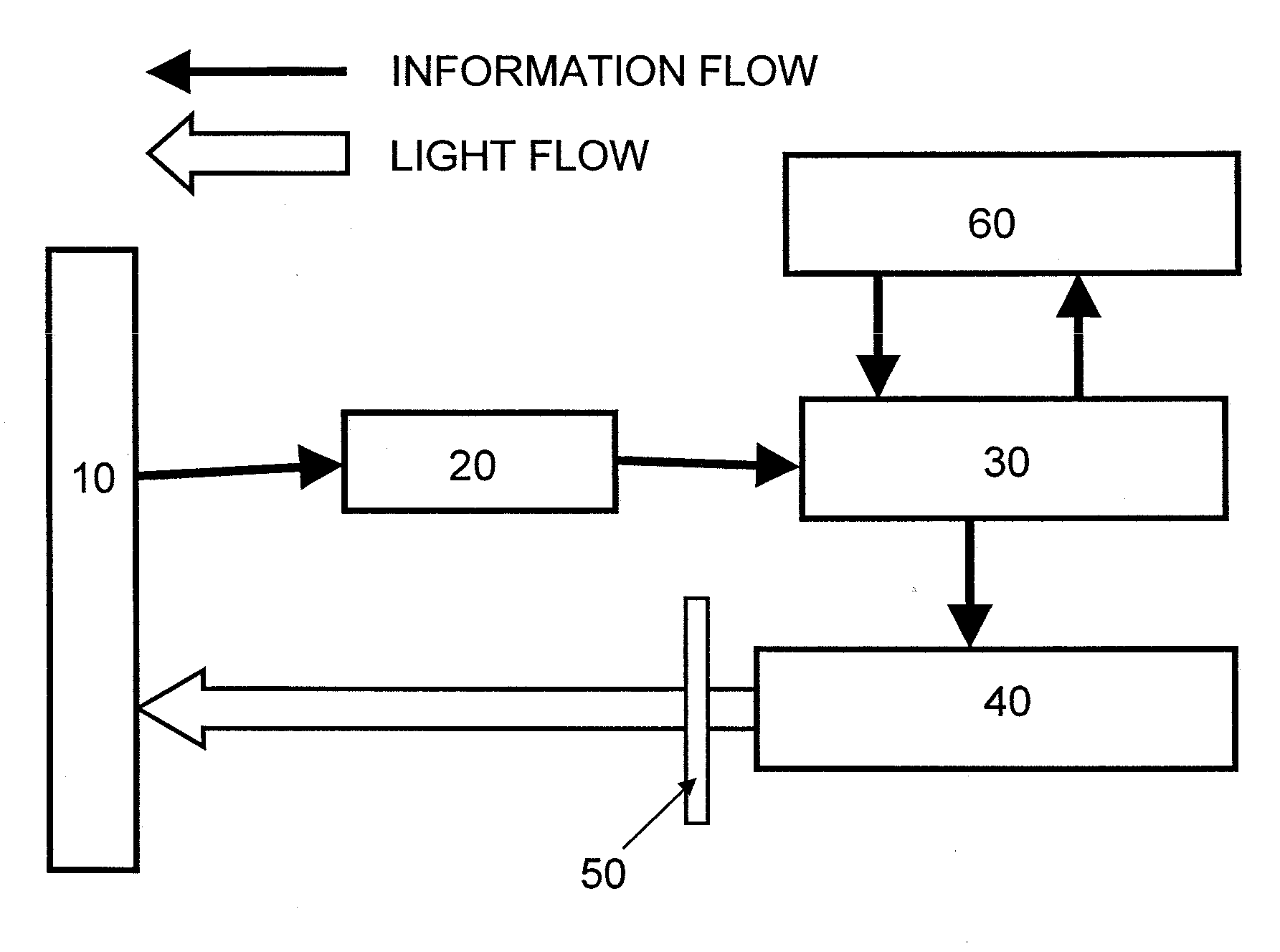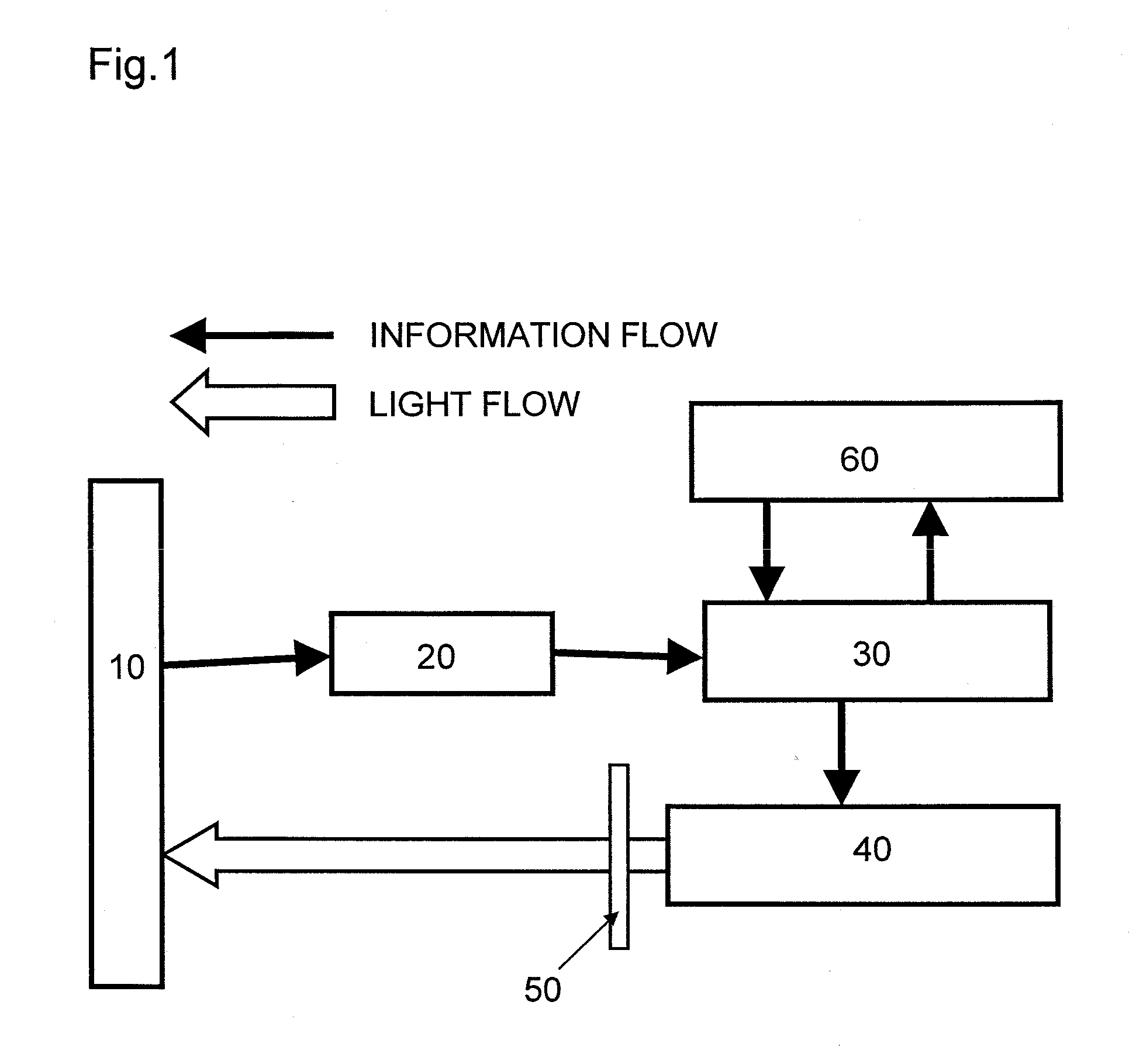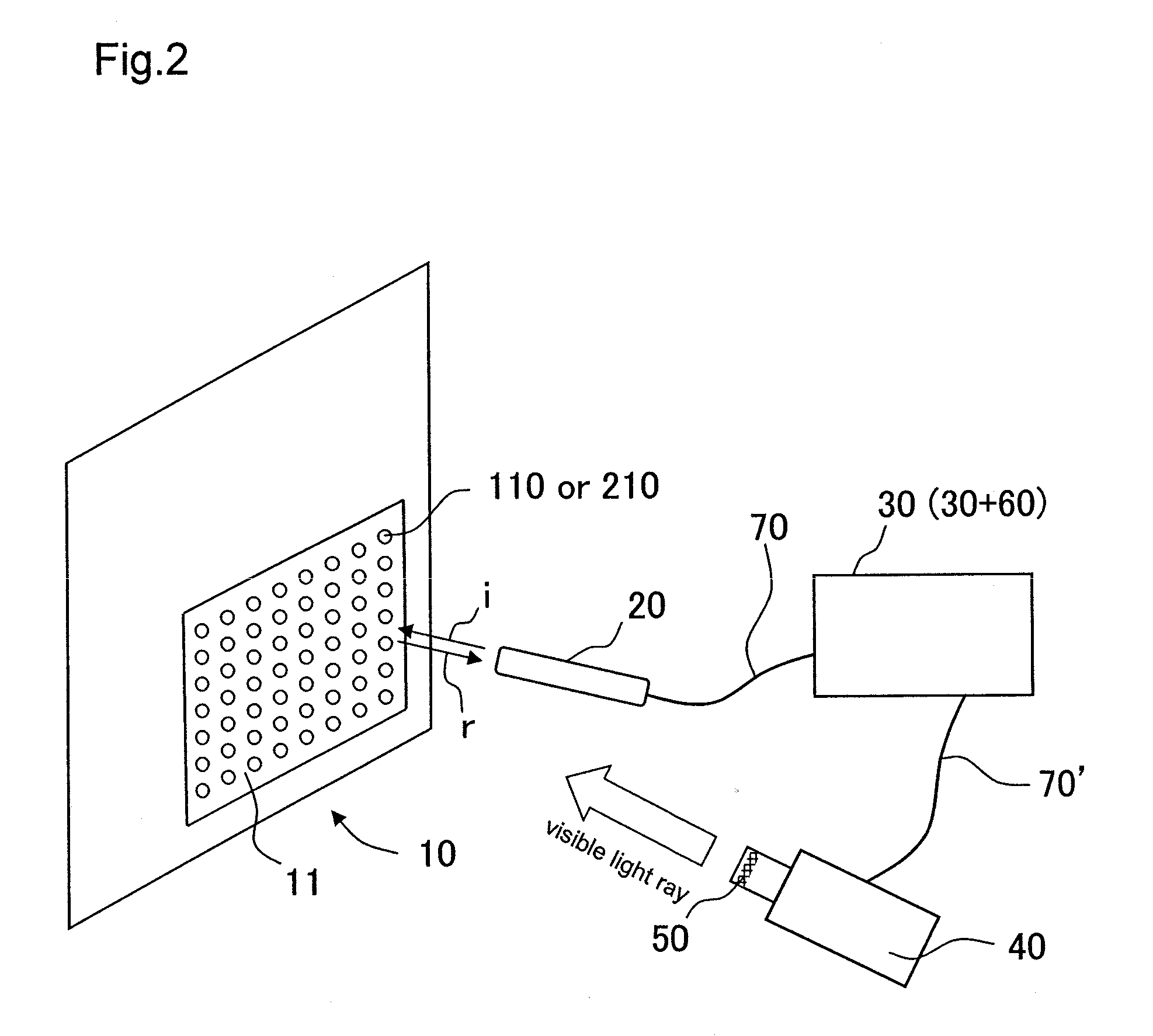Image projection system
- Summary
- Abstract
- Description
- Claims
- Application Information
AI Technical Summary
Benefits of technology
Problems solved by technology
Method used
Image
Examples
production example 1
[0201]The following components were uniformly kneaded and dispersed, whereby an ink A for the formation of reflection patterns was prepared.
Polyurethane-based resin (trade name “Urearnou40.0 parts by weight 2466” manufactured by Arakawa ChemicalIndustries, Ltd.):Nitrocellulose:2.0 parts by weightCuring agent (trade name “TAKENATE D-110N”4.0 parts by weightmanufactured by MITSUI CHEMICALSPOLYURETHANES, INC.):Isopropyl alcohol:5.0 parts by weightMethyl ethyl ketone:6.0 parts by weightEthyl acetate:4.0 parts by weightTitanium oxide:39.0 parts by weight (surface-treated with silica, average particlediameter: 0.3 μm)
[0202]Next, the upper portion of the base material A 121 having a thickness of 125 μm and composed of polyethylene terephthalate (PET) was coated with a solution prepared by dissolving, in methyl ethyl ketone (MEK), 100 parts by weight of pentaerythritol triacrylate, 0.03 part by weight of an acrylic acid copolymer-based leveling agent (trade name “BYK361” manufactured by BYK...
production example 2
[0204]A solution was prepared by dissolving, in methyl isobutyl ketone (MIBK), 100 parts by weight of a monomer having a polymerizable acryloyl group at any one of its terminals and having a nematic-isotropic transition temperature around 110° C. (having a molecular structure represented by the chemical formula (9)), 3.0 parts by weight of a chiral agent having a polymerizable acryloyl group at any one of its terminals (having a molecular structure represented by the chemical formula (12)), and 4 parts by weight of a photopolymerization initiator diphenyl-(2,4,6-trimethylbenzoyl)phosphine oxide (trade name: Lucirin TPO, manufactured by BASF), and the solution was defined as an ink B for the formation of reflection patterns.
[0205]Next, the primer layer 122 having a thickness of 1 μm was formed on the same base material A 121 as that of Production Example 1 in the same manner as in Production Example 1. Thus, the substrate A 120 was obtained.
[0206]The above ink B for the formation of ...
production example 3
[0207]An infrared ray-reflecting ink was prepared by dissolving, in methyl isobutyl ketone, 100 parts by weight of a monomer having a polymerizable acryloyl group at any one of its terminals and having a nematic-isotropic transition temperature around 110° C. (having a molecular structure represented by the compound (11)), 3.0 parts by weight of a chiral agent having a polymerizable acryloyl group at any one of its terminals (having a molecular structure represented by the above chemical formula (12)), 4 parts by weight of a photopolymerization initiator (Lucirin TPO manufactured by BASF), and 0.3 part by weight of a leveling agent (BYK361 manufactured by BYK-Chemie GmbH).
[0208]The liquid crystal solution was directly applied onto the transparent base material B 240 having a thickness of 125 μm and composed of PET by a gravure printing method, and was cured by being irradiated with an ultraviolet ray, whereby the infrared ray-diffusing-and-reflecting substrate B 220 was produced.
[02...
PUM
 Login to View More
Login to View More Abstract
Description
Claims
Application Information
 Login to View More
Login to View More - R&D
- Intellectual Property
- Life Sciences
- Materials
- Tech Scout
- Unparalleled Data Quality
- Higher Quality Content
- 60% Fewer Hallucinations
Browse by: Latest US Patents, China's latest patents, Technical Efficacy Thesaurus, Application Domain, Technology Topic, Popular Technical Reports.
© 2025 PatSnap. All rights reserved.Legal|Privacy policy|Modern Slavery Act Transparency Statement|Sitemap|About US| Contact US: help@patsnap.com



